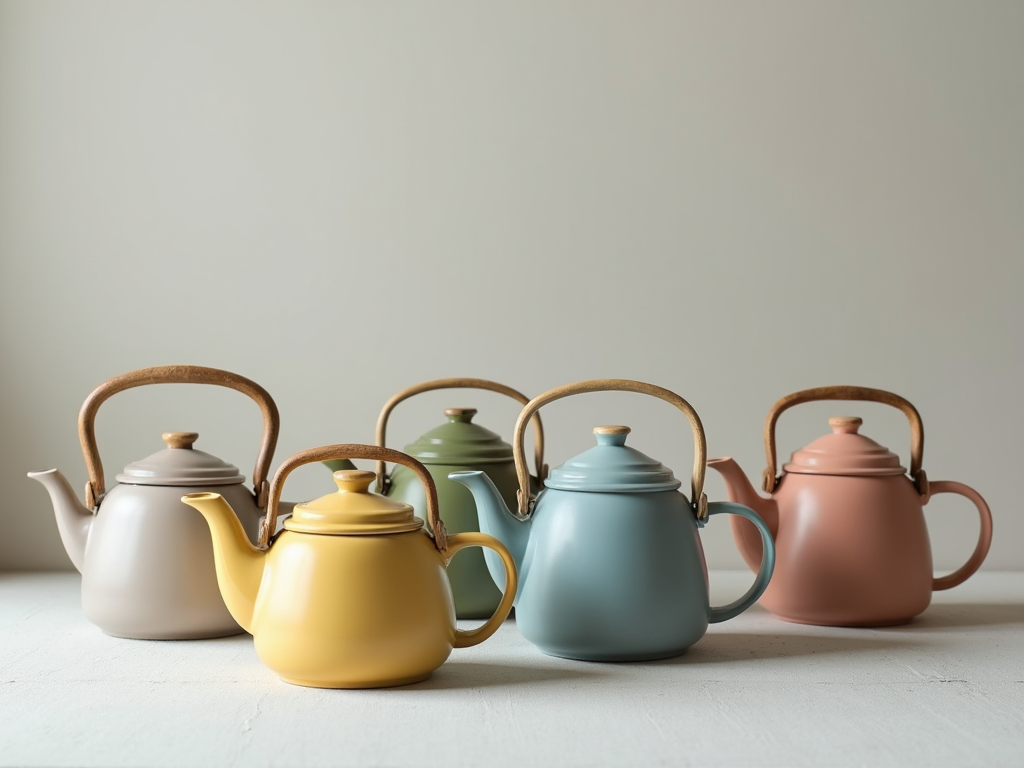Quick facts
Can't find the answer you're looking for? Please get in touch with our friendly team.
What are teapots used for?
Teapots are primarily used for brewing and serving tea. They allow hot water to steep tea leaves, enhancing flavor. Often made from materials like ceramic or glass, teapots can also serve as decorative items in home decor, adding style to kitchen or dining spaces.
What is the difference between a kettle and a teapot?
A kettle is used for boiling water, often with a spout and handle, while a teapot is designed for steeping tea. Teapots usually have a lid and a built-in strainer, and they serve tea directly. Kettles are typically made of metal or glass, while teapots can be ceramic or porcelain.
Why are teapots so expensive?
Teapots can be expensive due to factors like craftsmanship, materials, and brand reputation. Handmade or designer teapots often use high-quality ceramics or metals, which increase their cost. Additionally, limited editions or unique designs can also drive prices higher in the home decor market.
What is the most famous teapot?
The most famous teapot is the 'Teapot' by designer Richard Sapper, created in 1983. Its sleek, modern design and functional aesthetics make it a popular choice in home decor. It is often celebrated for its unique shape and is a favorite among collectors.
What is the best type of teapot to use?
The best type of teapot is typically made of porcelain or cast iron. Porcelain retains heat well and is easy to clean, while cast iron provides excellent heat retention. Choose based on your style preference and how you plan to use it, such as for serving or brewing.
Category Overview
Introduction
Teapots serve a delightful purpose in homes, transforming ordinary tea brewing into an enjoyable ritual. Their significance goes beyond mere utility; they enhance everyday life by providing comfort during quiet afternoons and acting as a centerpiece during social gatherings. Whether you’re unwinding with a cup of chamomile or hosting friends for a tea party, a well-chosen teapot brings not just warmth but also an aesthetic appeal that elevates your space.
Functionality
The primary function of teapots is to steep and serve tea, allowing you to brew multiple cups at once—perfect for entertaining or simply indulging yourself. You’ll often find teapots in the kitchen during meal preparations, on dining tables as you share moments with family, or even in outdoor settings for garden parties. Many modern teapots come equipped with features like built-in infusers for loose leaf tea, heat-retaining designs that keep your drink warm longer, and spouts designed for easy pouring—all enhancing their usability.
Design & Style
Teapots are available in a variety of materials such as ceramic, glass, stainless steel, and cast iron. Each material offers unique aesthetic qualities—from the delicate elegance of porcelain to the rustic charm of enameled cast iron. You can find styles ranging from traditional floral patterns to sleek minimalist designs that fit seamlessly into contemporary kitchens. Personalization is easy; many allow you to express your style through color choices and motifs that align with different decor themes—be it modern chic or vintage farmhouse.
Practical Considerations
When selecting the right teapot for your needs, consider factors like capacity (how many cups do you usually brew?), material (is durability important for daily use?), and design preference (what fits well with your kitchen's style?). Avoid common mistakes such as choosing a pot that's too small or one lacking an ergonomic handle if you plan on pouring frequently. To maximize functionality, ensure the lid fits securely to prevent spills and check if it's dishwasher-safe for easy cleaning.
Comparison and Alternatives
Different materials offer varied pros and cons: ceramic teapots retain heat effectively but can be fragile; stainless steel models often boast durability but may not hold heat as long; while glass allows you to visually monitor steeping but requires careful handling. The shape also matters—round pots typically have more elegant curves perfect for traditional settings; rectangular ones may appeal more in modern environments where sharp lines dominate furniture design.
Trends and Popular Items
Currently, there’s a rising trend towards sustainable materials like bamboo-infused ceramics alongside the timeless allure of classic Japanese cast iron pots known for their craftsmanship and longevity. Customers are increasingly favoring multifunctional designs—teapots that double as serving vessels are becoming favorites among those seeking both practicality and style in their kitchenware collections. In summary, choosing the right teapot can greatly enrich your tea-drinking experience while seamlessly fitting into your home’s aesthetic landscape—a small yet significant element that enhances comfort and connection within daily routines.


